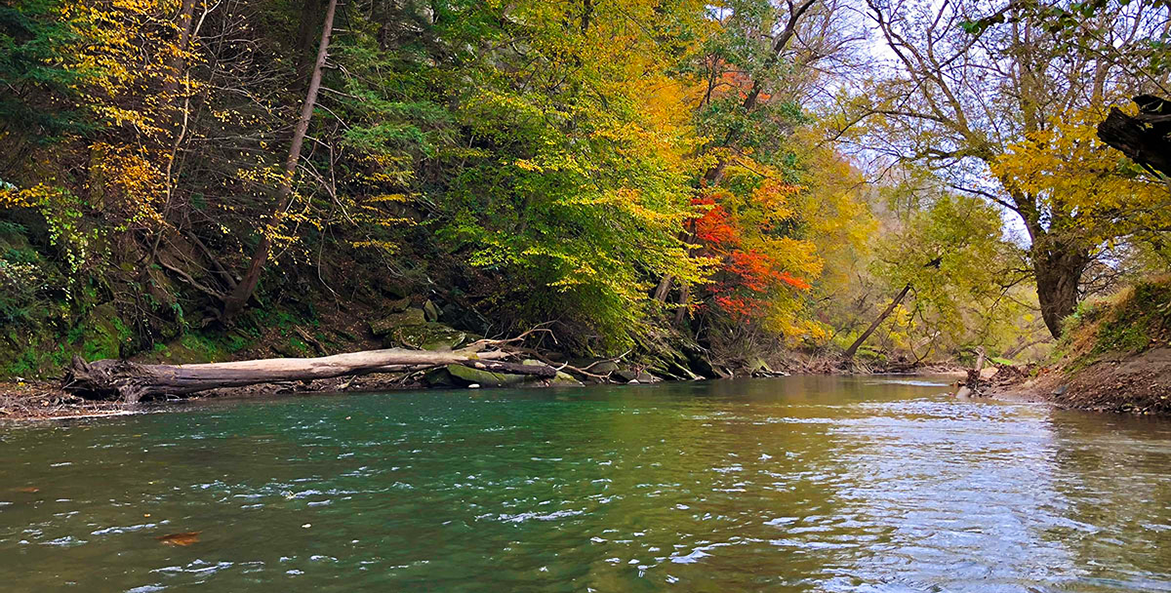This was originally published on February 22, 2024, as a Special to the USA TODAY Network.
I was recently asked what gives me the most hope in my work. I answered, “Pennsylvania.”
Hope can be elusive in the world of environmental restoration. For the past 40 years, Pennsylvania, Maryland, and Virginia have been engaged in one of the largest environmental efforts in the country: the restoration of the Chesapeake Bay. While many places throughout the watershed are wonderfully alive and improving—including the lush underwater meadows where the Susquehanna River meets the Bay—the restoration partnership is approaching its third missed deadline to reduce pollution. The frustration is real.
It is increasingly clear that the same approaches we’ve taken to date can only get us so far. Our efforts have been too diffuse, often failing to identify and target resources effectively to the most-needed places. Too often they have also been focused on solving only one side of the equation—the environmental side—rather than addressing what both people and nature need to thrive together.
To move beyond the status quo, we need a paradigm shift. It might very well resemble some of the quietly momentous work underway in Pennsylvania.
Among the best examples is in Lancaster County. With more than 92% of its 1,400 miles of streams deemed “impaired” by the Pennsylvania Department of Environmental Protection, a groundswell of local concern resulted in the formation of the Lancaster Clean Water Partners in 2018. The coalition has since grown to more than 50 partners, including farmers, outdoor enthusiasts, local governments, businesses, and many others.
Recognizing it can’t solve everything all at once, the partnership uses fine-scale data and scientific analysis to identify where stream health can be improved the fastest. It then targets resources to those places, while ensuring partners are enhancing—not duplicating—each other’s efforts.
Within this framework, detailed restoration plans are being developed for priority streams, like Pequea Creek. Starting in 2018, the Chesapeake Bay Foundation, working with Lancaster Clean Water Partners and others, began an extensive mapping and data analysis effort to pinpoint areas contributing the most pollution to the creek. The partners also worked with community members to identify how projects could address other concerns and deliver additional benefits beyond water quality—for example creating fishing and hunting habitat, reducing flood risks and erosion, and providing more public water access.
The intensive process helps ensure the plans will work in the real world, and also unlocks state and federal funding so local governments and organizations can implement them. In 2022, the Pequea Creek Watershed Restoration Plan, developed by the Chesapeake Bay Foundation, secured more than $2 million in federal funding thanks to the efforts of Sen. Bob Casey and Sen. Ben Cardin. In December 2023, the Pennsylvania Department of Environmental Protection awarded more than $4 million for clean water projects in Lancaster County through the Countywide Action Plan opportunity.
The problem is far from solved. Across Pennsylvania, a growing number of stream miles are impaired—more than 28,000 of them as of the latest state assessment. Downstream, the Chesapeake Bay also remains impaired. Enormous pressures including climate change, development and intensifying agriculture are reshaping our landscapes and our communities.
Meeting these challenges, as well as legacy pollution, will require a concerted commitment from state leaders.
Two years ago, the General Assembly took a significant step in the right direction by creating the Clean Streams Fund. Championed by CBF and many clean water partners, it included $154 million for a new Agricultural Conservation Assistance Program, or ACAP, to help farmers reduce polluted agricultural runoff, the biggest opportunity to make improvements to the Commonwealth’s rivers and streams. With funding set to run out in the next few years, however, these programs will need increased, sustained funding — something policymakers can do proactively in the next state budget.
Alongside funding, though, we also need more nimble, innovative conservation: conservation that is grounded in science and community needs, targeted to the places it will be most effective, and pursued collaboratively with ambitious partnerships.
In short, we need much more of what we’re seeing in Lancaster County. We need it in Pennsylvania, and we need it across the Chesapeake Bay watershed. Our rivers, creeks and streams, and all of the people who love and depend on them, deserve no less.




